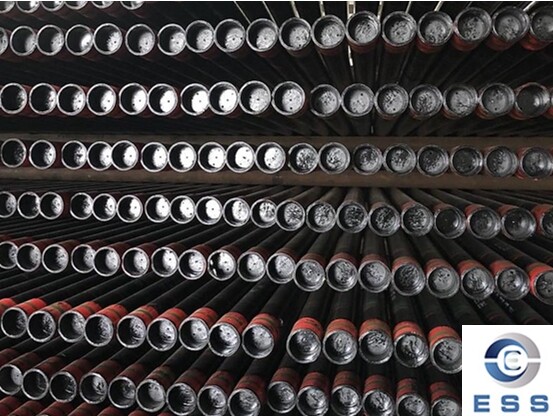
In the oil and gas industry, tubing pup joints as OCTG pipe are key components used to adjust the length of tubing or casing pipe strings
and are widely used in drilling, completion and production stages.
Understanding the temperature tolerance of tubing pup joints is crucial to
ensuring their reliability and safety in extreme environments. So what is the
temperature tolerance of tubing pup joints?
Temperature tolerance range of tubing pup
joints
The temperature tolerance of tubing pup
joints mainly depends on their materials and manufacturing processes. The
following are the temperature tolerance ranges of different types of materials:
1. Carbon steel
Ordinary carbon steel: Carbon steels such
as J55 and N80 usually have a temperature tolerance range of -20°F to 200°F (about -29°C to 93°C).
High-strength carbon steel: Carbon steels
such as P110 can work at higher temperatures, ranging from -20°F to 300°F (about -29°C to 149°C).
2. Stainless steel
304 and 316 stainless steel: These
materials have better corrosion resistance and high temperature performance,
with a temperature range of -20°F to 800°F (about -29°C to 427°C).
3. Special alloy materials
Nickel-based alloys and chrome-molybdenum
steels: These materials are used in extreme high temperature environments and
can operate at temperatures up to 1000°F (about 538°C) or even higher.
Temperature requirements in actual
application scenarios
1. Drilling and completion stage
During the drilling and completion process,
the tubing pup joint is usually exposed to the influence of formation
temperature and drilling fluid temperature. Generally, the formation
temperature ranges from 60°F to 200°F (about 16°C to 93°C).
Therefore, ordinary carbon steel tubing pup joints can usually meet the
temperature requirements of this stage.
2. Production stage
During the oil and gas production process,
the tubing pup joint will be exposed to oil and gas fluids, and its temperature
may vary depending on the nature of the oil and gas and production conditions.
For conventional oil and gas production, the temperature range is generally
between -20°F and 200°F (about
-29°C to 93°C). However, in
some high-temperature oil and gas fields (such as geothermal oil and gas fields
or deep-sea oil and gas fields), the temperature may be higher, and special
materials of tubing pup joints are required.
3. Special environment
In some special application scenarios, such
as geothermal mining or high-temperature and high-pressure oil and gas fields,
tubing pup joints need to withstand higher temperatures. For example, in
geothermal mining, the bottom hole temperature may be as high as 300°F to 400°F (about 149°C to 204°C), or even higher. In this case,
tubing pup joints made of special alloy materials must be used.
Effect of temperature on the performance
of tubing pup joints
1. Strength and toughness
As the temperature increases, the material
strength of tubing pup joints generally decreases. For example, carbon steel
may experience a decrease in yield strength and poor toughness at high
temperatures. Therefore, in high-temperature environments, materials with
higher strength and toughness need to be selected.
2. Corrosion resistance
Increased temperature may intensify the
corrosion reaction, especially when the tubing pup joint is exposed to an
environment containing corrosive gases such as hydrogen sulfide (H₂S) and carbon dioxide (CO₂). Stainless steel and special alloy materials generally have better
corrosion resistance and can maintain performance in high-temperature corrosive
environments.
3. Sealing
High temperature may cause the performance
of sealing materials (such as thread sealants, sealing rings, etc.) to
deteriorate, thereby affecting the sealing of the tubing pup joint. Therefore,
in high-temperature applications, it is necessary to select high-temperature
resistant sealing materials and ensure the reliability of the sealing system.
Recommendations for selecting tubing pup
joints
1. Material selection
Select the appropriate material according
to the specific temperature requirements and application environment. For
conventional applications, ordinary carbon steel materials are usually
sufficient; for high-temperature applications, stainless steel or special alloy
materials are recommended.
2. Temperature testing and verification
When selecting a tubing pup joint, a series
of material tests are required to determine its performance at different
temperatures. These tests include tensile tests, hardness tests, impact tests,
etc. Through these tests, the strength, toughness and corrosion resistance of
the material at high temperatures can be evaluated.
3. Practical application test
In practical applications, the tubing pup
joint also needs to be tested under actual working conditions to verify its
performance under specific temperature and pressure conditions. For example,
through high temperature and high pressure simulation tests, the sealing and
durability of the tubing pup joint in a high temperature oil and gas
environment can be evaluated.
Summary
The temperature tolerance of the tubing pup
joint mainly depends on its material and application scenario. When selecting a
tubing pup joint, material selection and performance verification should be
carried out according to specific temperature requirements and application
environment to ensure its reliability and safety in actual use.













 Eastern Steel Manufacturing Co.,Ltd not only improve product production and sales services, but also provide additional value-added services. As long as you need, we can complete your specific needs together.
Eastern Steel Manufacturing Co.,Ltd not only improve product production and sales services, but also provide additional value-added services. As long as you need, we can complete your specific needs together.










